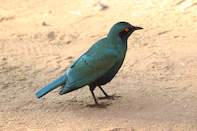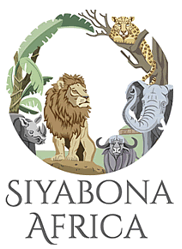
Botswana Wildlife Guide on Birds
Birds of Botswana
Botswana is a country blessed with a wide range of eco-systems - from semi-desert to wetlands - allowing for a range of bird species to inhabit the country. Although not the most diverse species-wise in Africa, and having no endemics, Botswana with more than 570 species nevertheless has an incredible bird heritage.
The best time to view birds in Botswana is during the wet season when all the migrants have arrived to spend the summer. It was believed that the rainy season is not the best time to spend on safari in Botswana. This belief stems from days gone by when hunting safaris were dominant in Botswana and few photographic tourists visited the country. The dry winter months were proclaimed as the hunting season and this idea stuck.
During the summer months the vegetation is green, animals are giving birth and Botswana's birds are in full voice and plumage. Migrants have swelled the species list making the summer the ideal time to visit.
Bird Concentrations in the Desert
Botswana is renowned for its concentrations of birds in specific places and times of the season. In the arid areas of the Kalahari huge numbers of birds flock to the limited water supplies, and in the wetlands of the Okavango Delta in Botswana birds concentrate at breeding colonies, drying pools on the floodplains and when the new flood is moving in.
Greater and Lesser Flamingos congregate on the Makgadikgadi Pans after the rains. At intervals when the water is high enough the Flamingos will breed. An award winning documentary about the Flamingos of Botswana 'Year of the Flame Bird' was filmed in the Makgadikgadi.
The Red-Billed Queleas are officially Africa's most plentiful bird species and Botswana has them in numbers. In fact at times they can darken the sky, especially around sunset when they are gathering to roost. Huge numbers can be seen around waterholes, especially in the drier grassland areas. They can be a huge problem with crops and this places them in competition with humans.
Fish Traps and Floods
When the seasonal floodplains of the Okavango Delta delta are drying up many fish are trapped in the pools left behind. It is here where an orgy of feeding can be seen with a multitude of birds of many species taking advantage of the easy pickings. Pelicans, Egrets, Spoonbills and a variety of storks swarm the drying pools.
With the arrival of the floods on the dry floodplains the birds gather again for the bounty of small crustaceans and insects that are rustled up by the water swamping the ground. The drying and flooding of the seasonal floodplains of the Okavango Delta is truly one of the marvels of nature and for bird lovers it is a time of feasting the eyes on an unrivalled experience.
Endangered Bird Species
Botswana, though not having any endemics, is an important area for some of Africa's most endangered species e.g. wattled crane and slaty egret found predominantly in the Okavango Delta. Both these species are endangered worldwide but in Botswana the numbers are stable.
National Bird
There is a debate as to what the national bird of Botswana is. It is generally thought to be the lilac-breasted roller, the outrageously colourful acrobat so favoured by safari-goers, but in reality Botswana has no national bird as such. The Department of Environment have apparently named the Kori bustard as the national bird but this has not been confirmed.
One of Botswana's signature birds is the Fish Eagle which can be seen and heard across the waterways of the country. The call of the Fish Eagle reverberating across the wilderness is to many people the call of Africa.

 Birders can be categorized in as many sections as you can think of. For simplicity I have condensed them into three categories based on ....
Birders can be categorized in as many sections as you can think of. For simplicity I have condensed them into three categories based on .... Botswana is less known for its birding potential, but with a range of landscapes, from desert to delta, it is coming into its own as an Afri...
Botswana is less known for its birding potential, but with a range of landscapes, from desert to delta, it is coming into its own as an Afri...